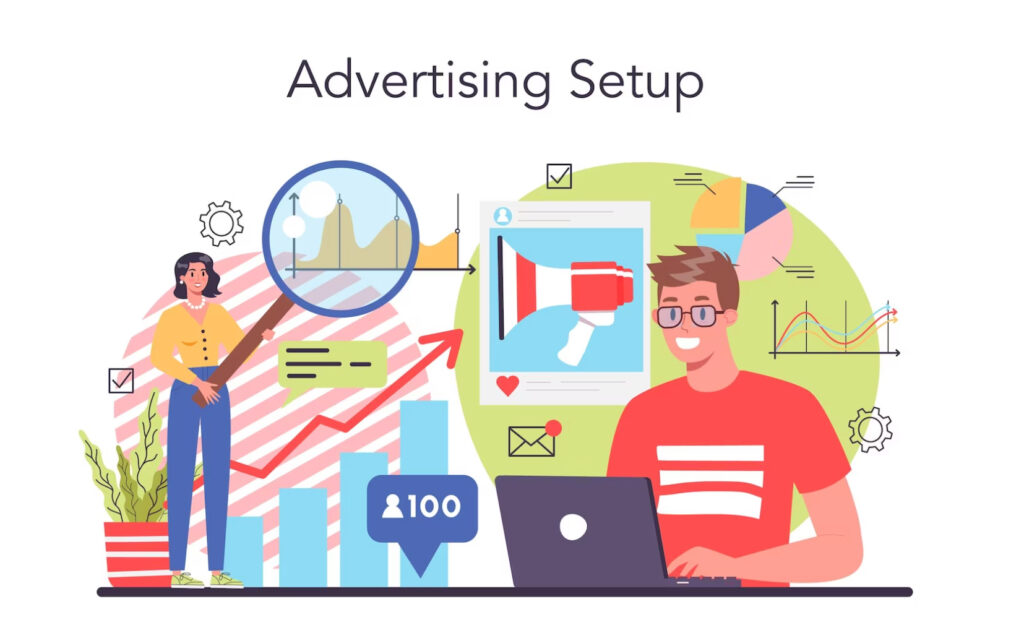Local PPC advertising refers to a digital advertising strategy where businesses target potential customers in a specific geographic location through paid search ads on platforms like Google Ads. This type of advertising is essential for businesses that want to reach a local audience and drive more traffic to their website or physical location.
The purpose of this article is to provide businesses with tips and best practices for creating a successful local PPC advertising strategy. Readers can expect to learn about the benefits of local PPC advertising, the key elements of a successful strategy, tips for optimizing local search ads, and best practices to follow to achieve the best results. By the end of the article, businesses will have a better understanding of how to create an effective local PPC advertising strategy that drives results.
Benefits of Local PPC Advertising
There are several benefits of local pay-per-click advertising that businesses can take advantage of:
- Increased visibility to local customers: By targeting potential customers in a specific geographic location, businesses can increase their visibility to local customers who are actively searching for their products or services.
- Cost-effective advertising: Compared to traditional advertising methods, such as print or television ads, local PPC advertising is often more cost-effective since businesses only pay when someone clicks on their ad.
- Increased ROI compared to traditional advertising: Local PPC advertising can provide a higher return on investment (ROI) compared to traditional advertising since it’s more targeted and trackable.
- Targeting specific locations and demographics: Local PPC advertising allows businesses to target specific locations and demographics, such as age, gender, and income level, to ensure their ads are seen by the right audience.
- Enhanced tracking and analysis of campaigns: With local PPC advertising, businesses can easily track and analyze the performance of their campaigns, allowing them to make data-driven decisions to optimize their ads and increase their ROI.
Key Elements of a Successful Local PPC Advertising Strategy
To create a successful local PPC advertising strategy, businesses should focus on the following key elements:
- Identifying goals and objectives: Before launching a local PPC advertising campaign, businesses should identify their goals and objectives. This could be anything from increasing website traffic to driving more sales or increasing brand awareness.
- Conducting keyword research: Keyword research is crucial for any PPC advertising campaign, as it helps businesses identify the most relevant and valuable keywords to target in their ads. For local PPC advertising, businesses should focus on location-based keywords that are relevant to their target audience.
- Creating targeted ad groups: By creating targeted ad groups, businesses can ensure their ads are shown to the right audience. Ad groups should be based on specific products or services, with ad copy and keywords tailored to each group.
- Crafting compelling ad copy: Ad copy should be compelling and relevant to the target audience, with a clear call-to-action (CTA) that encourages potential customers to take action. Businesses should focus on highlighting their unique selling proposition (USP) and the benefits of their products or services.
- Implementing ad extensions: Ad extensions provide additional information to potential customers and can increase the click-through rate (CTR) of ads. Some examples of ad extensions include sitelink extensions, call extensions, and location extensions.
- Optimizing landing pages: Landing pages should be optimized for conversions, with a clear and relevant message that aligns with the ad copy. Landing pages should also be mobile-friendly, fast-loading, and easy to navigate.
By focusing on these key elements, businesses can create a successful local PPC advertising strategy that drives results and achieves their goals.
Tips for Optimizing Local Search Ads
To optimize local search ads, businesses should consider the following tips:
- Using location targeting: Location targeting allows businesses to target potential customers in specific geographic locations, such as a city or zip code. This ensures that ads are shown to the right audience and can help increase the click-through rate (CTR) of ads.
- Incorporating ad scheduling: Ad scheduling allows businesses to show ads at specific times of the day or week. This can be useful for businesses that want to target customers during specific hours or when their business is open.
- Utilizing call extensions: Call extensions provide potential customers with a phone number they can click on to call the business directly from the ad. This can increase the likelihood of a conversion, particularly for businesses that rely heavily on phone calls for sales or bookings.
- Implementing geo-targeting: Geo-targeting allows businesses to target potential customers within a specific radius of their physical location. This can be useful for businesses with a physical storefront or service area, as it ensures ads are shown to customers who are likely to convert.
- Testing different ad formats: Testing different ad formats, such as text ads, image ads, or video ads, can help businesses determine which format performs best for their audience. This can also help businesses stand out from their competitors and increase the effectiveness of their ads.
Best Practices for Local PPC Advertising
To get the most out of their local PPC advertising campaigns, businesses should follow these best practices:
- Consistently monitor and analyze campaigns: Monitoring and analyzing campaigns on a regular basis allows businesses to identify areas for improvement and make data-driven decisions. Businesses should track metrics such as click-through rate (CTR), conversion rate, and cost per acquisition (CPA) to optimize their campaigns.
- Optimize for mobile devices: With more and more people using their mobile devices to search for local businesses, it’s important for businesses to ensure their ads are optimized for mobile devices. This includes using mobile-friendly landing pages and ensuring ad copy is concise and easy to read on a smaller screen.
- Incorporate local keywords in ad copy: Using local keywords in ad copy can help businesses target customers who are searching for products or services in their specific location. Businesses should use location-based keywords in both the ad headline and ad copy.
- Use relevant landing pages: Landing pages should be relevant to the ad and provide potential customers with the information they are looking for. This can help increase the likelihood of a conversion and improve the overall effectiveness of the ad.
- Utilize negative keywords: Negative keywords allow businesses to exclude certain keywords from their campaigns, ensuring their ads are not shown to irrelevant audiences. This can help improve the quality of traffic to a website and increase the ROI of a campaign.
- A/B testing: A/B testing involves creating two versions of an ad and testing them to determine which performs better. This can be useful for businesses that want to optimize their ad copy, landing pages, or other elements of their campaign.
By following these best practices, businesses can create effective and successful local PPC advertising campaigns that drive results and achieve their goals.
Сonclusion
Local PPC advertising is a powerful tool for businesses to reach and engage with potential customers in their area. By implementing a well-planned local PPC advertising strategy, businesses can increase visibility, improve ROI, and effectively target specific locations and demographics.
The key takeaways from this article include identifying goals and objectives, conducting keyword research, creating targeted ad groups, crafting compelling ad copy, implementing ad extensions, optimizing landing pages, and utilizing tips and best practices such as location targeting, ad scheduling, call extensions, geo-targeting, negative keywords, and A/B testing.
We encourage readers to implement these tips and best practices to optimize their local PPC advertising campaigns and achieve their desired results. By consistently monitoring and analyzing campaigns, optimizing for mobile devices, incorporating local keywords in ad copy, using relevant landing pages, utilizing negative keywords, and A/B testing, businesses can create effective and successful local PPC advertising campaigns.
For further reading and resources on local PPC advertising, we recommend checking out industry publications such as Search Engine Journal, PPC Hero, and Wordstream, as well as the official Google Ads Help Center.


